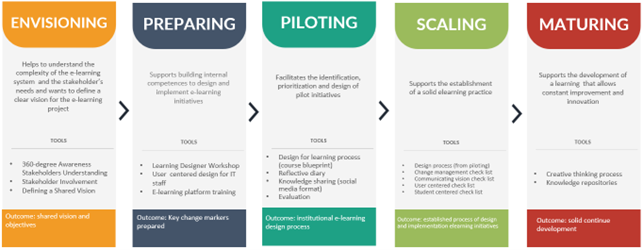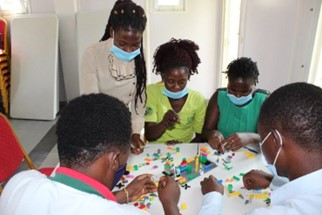By Heillyn Camacho, Consufé, hcamacho@consufe.com and Lone Dirckinck -Holmfeld, Aalborg University, lone@hum.aau.dk
Currently organizations around the world face ever-increasing demands to respond to the challenges of the twenty-first century, including climate change, volatility, social and political conflicts, emerging technologies, and constant change. With the recent outbreak of COVID-19, it brought even more pressure to educational institutions to become more competitive, respond to the needs of the students, and to rethink curriculum organization. Many universities have endeavoured to get their courses up and running remotely during the COVID-19 pandemic. Getting courses/content in digital format is great, but it is a quick answer to an emergency. The question that we should answer is how to support meaningful and transformative learning in digital learning environments? Many researchers have tried to give an answer to this question, and it seems to be agreement that to design for learning in digital environments demands the alignment of many different factors and actors, which in the end lead to an organizational, educational, and learning culture transformation. The challenge for educational organizations and in general to organizations is to create the ecosystem of digital and physical solutions (hybrid formats) that explicitly will foster the development of skills, competences, and knowledge that students need to thrive in the current and future world.
In this blog we briefly present one of the products of the Digital Learning Innovation project, which was dealing with the question: How to develop participatory implementation strategies, which are likely to be successful in East Africa universities to adopt student-centered elearning? Still when the project was aimed to East Africa, the results are applicable to organizations in any country and currently the methodology is being tested in Denmark.
The proposed methodology: Student-Centered e-learning implementation methodology
The methodology was developed as a part of the DLI project, which was a partnership between Aalborg University, Consufé, and CanopyLab. The project was funded through the PIVØ program administrated by Access2innovation and financed by the European Regional Fund. With the development of this methodology, the DLI project aims to provide to educational institutions with the proper implementation guideline in a sustainable and scalable manner that will work as a scaffolding for institutions enabling them to reach internal organizational learning and maturity regarding e-learning.
The methodology is composed of five steps and each step has a set of well-described tools. The 5-step methodology (see figure) is a prototype and only steps 1 and 2 were fully tested. The other steps were products of academic literature review, field research and feedback from the pilots run in Gulu University and Maseno University.

Principles of the methodology
The methodology is constructed on the foundation of the sociotechnical approach to implement technology into an organization. Sociotechnical approach seeks to address four key elements when implementing technology: people, technology, process, and strategy. Within this approach the alignment of those aspects will contribute to a more successful implementation process. Following the sociotechnical, the methodology has four principles:
- Participation – user centered approach to design elearning, both from the organizational and pedagogical perspective
- Pedagogy drives elearning (social learning, active learning, problem-based learning). Educational technology that will develop high order thinking skills (problem solving, critical thinking, innovation, etc.). It is important to avoid replicating the ‘chalk & talk’ teaching approach with new technology.
- Organizational culture – the introduction of elearning and student-centered approaches demands an alignment of the organizational culture with the values of those approaches. An organization culture that will support those approaches should be slowly developed
- Change management – The focus must be learning and not teaching; therefore, teaching practices should be transformed to foster learning. Teachers will need to learn new teaching skills and technological skills to design student centered elearning environments. The change is not only for teachers but also for students. All those new ways of working demand an organizational change, which demands proper management. It is well documented that non-technological issues might hinder the implementation of elearning initiatives, therefore the need of a proper change management practice.
An exemplary experience
The methodology encourages the use of creative spaces, participatory approaches, and object-mediated communication to involve participants into active learning experiences, in an exemplary way, and then to promote a shift in their mindsets.
For example, during the different steps of the methodology, faculty will use Design Thinking tools for rethinking their practices, analyzing their own behaviors and empathizing with their students. They will experience disruptive learning environments for fostering divergent thinking, and playful learning that will allow participants to comprehend situations and scenarios using a different way of thinking. They will also use visual thinking to design online courses.


We invite teachers, facilitator, and researchers who might be interested to use the methodology to contact the authors of this blog. Full description of the methodology can be found here: SC-elearning methodology.
